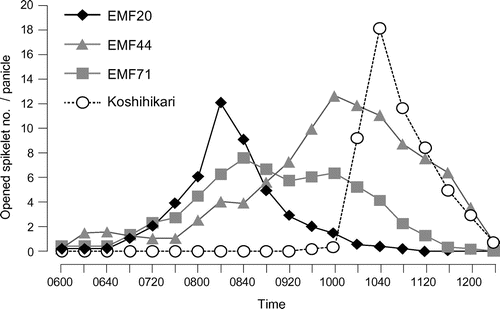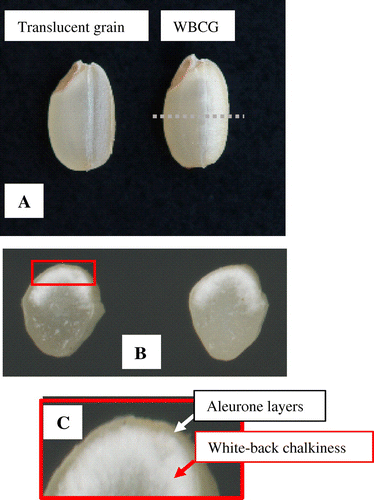Figures & data
Table 1. Overlapped or closely linked QTLs for heat tolerance identified in different populations.
Figure 1. Flowering pattern of Kosihikari and alien introgression lines of O. officinalis. Opened spikelet number per panicle was counted every 20 min. Closed rhomboids, gray squares, gray triangles, and open circles indicate opened spikelet number per panicle of EMF20, EMF44, EMF71, and Koshihikari, respectively.

Table 2. Spikelet sterility (%) of Nanjing11, Nanjing11 + qEMF3, and popular cultivars in tropics in control and heat treatment.
Figure 2. Phenotype of WBCG. A: Overview of whole grain, B: Median transversal section of WBCG, C: Magnified view at chalky part. The outermost position indicated by white arrow is aleurone layers at dorsal side of the grain. The phenotype of starchy endosperm adjacent to dorsal aleurone layers is called as white-back chalkiness (red arrow).
